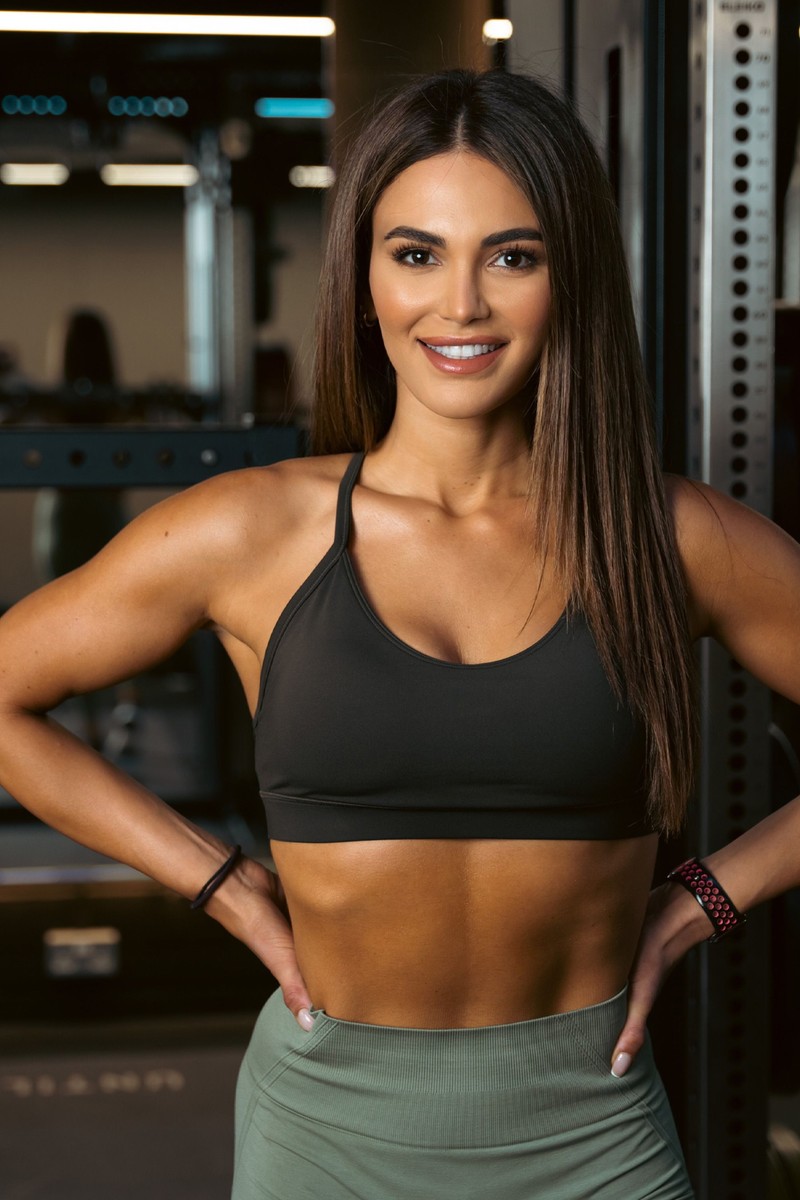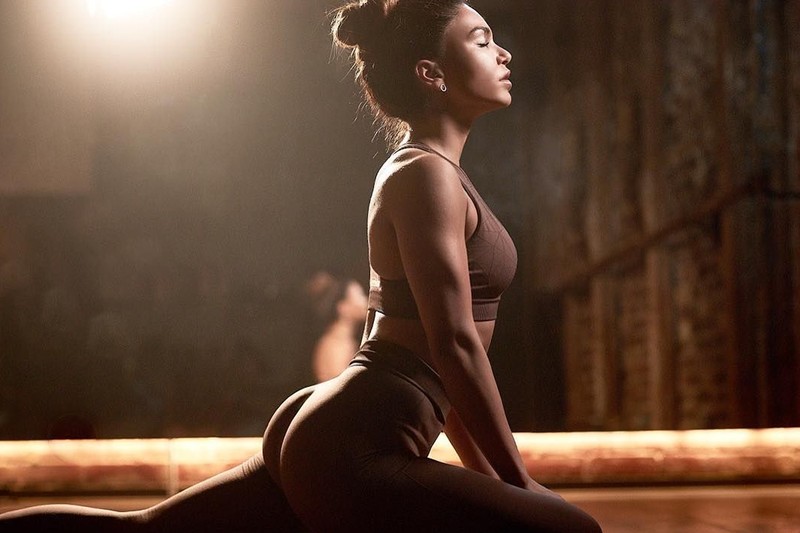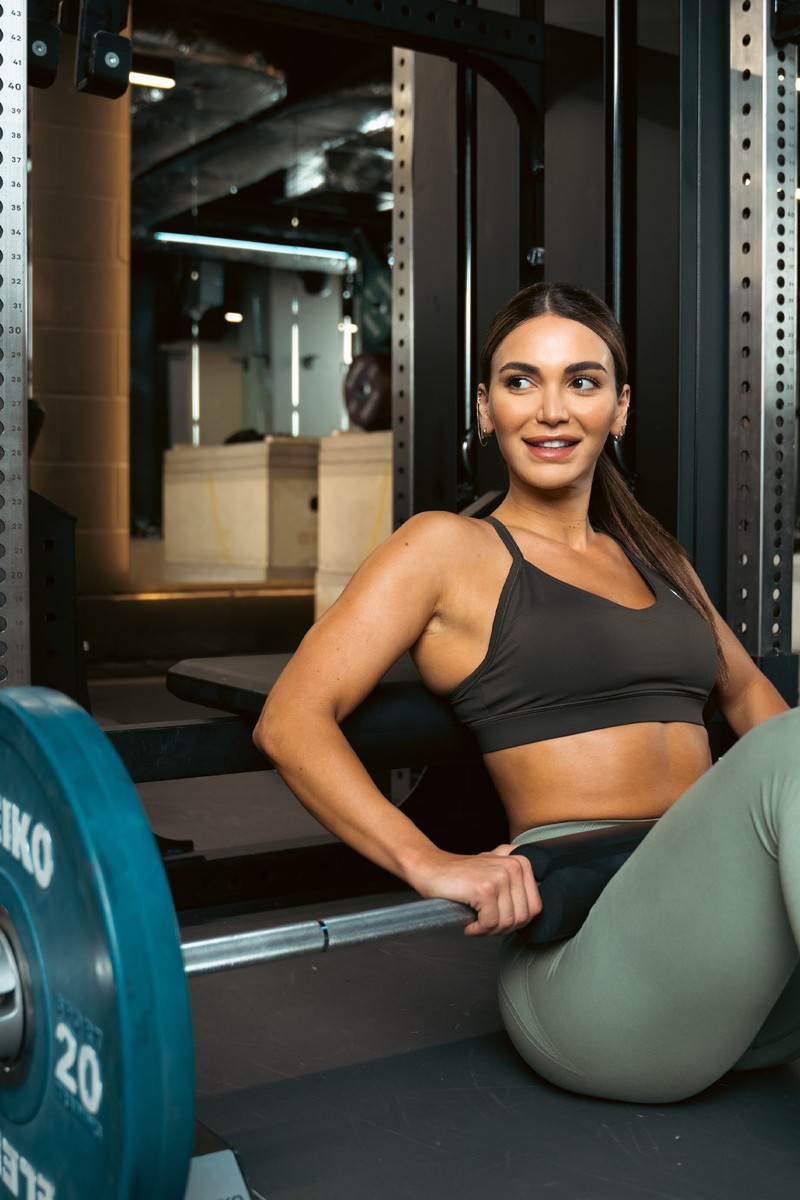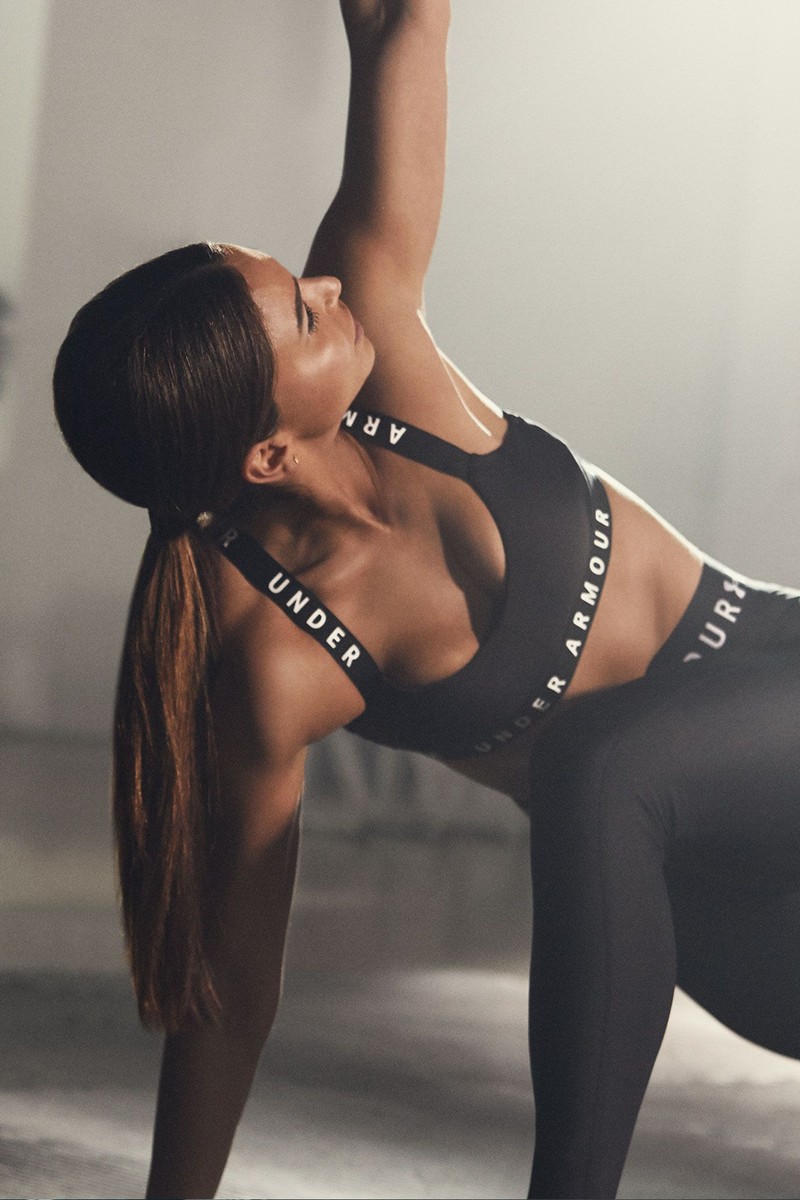A Leading Top Trainer Shares Her Week In Workouts
I hit the gym at least four times a week. Seven years ago, I had a major spinal injury, which left me with nerve damage down the left side of my body. Because of this, being strong is key for me and keeps me injury free. I split my gym sessions across four days – I focus two on upper body, and two for the lower body. For me, this is the perfect split to achieve targeted training while still getting a great full-body stimulus. I always start a Monday with leg day (focusing on the glutes and hamstrings); Tuesday will typically be an upper-body day, with a back and shoulder bias; Wednesday will be my second lower-body day focusing on the glutes and quads; and in my final session, I’ll work the chest and shoulders.
Steady state cardio is non-negotiable. Once a week, I’ll sustain my heart rate in zone two for 30-40 minutes. If I get to the end of the week and feel like an extra push, I’ll head to BXR for a VersaClimber class where I can push my heart rate and exercise in zone four at around 80% capacity. This is a bonus in my week – it doesn’t always happen and it isn’t a strict part of my routine. This way, I have zero disappointment if I miss it from time to time. It’s important to allow yourself some flexibility with your workouts. The reality is that life will get in the way, and other things will take priority. Flexibility is key.
I start each session with ten minutes of mobility. This mobilises my joints and activates the right muscle groups for the session ahead. This might sound like a lot, but little and often is the best approach when it comes to fitness. You don’t need to do one hour of strength, one hour of cardio and one hour of mobility all separately – intersperse them when you can. After every workout, I do a few minutes of box breathing to settle my nervous system. I love Pilates, too, and sometimes add on 15 minutes at the end of a session.
If you only have time for two sessions, focus on full-body strength. If you want to see results, you need to be realistic. If you only have time in your week for two or three sessions, make them full-body sessions to get more bang for your buck. If you can train three to five times a week, split your sessions into different movement patterns or body parts depending on your goals. It can also help to train movement patterns rather than muscle groups. For example, think about training hinge patterns in one session (using moves like hip thrusts and deadlifts) and then knee-focused movements in another session, using lunges, squats and leg extensions. The functional movements you do in your everyday life – squat, hinge, push, pull and carry – aren’t fancy, but perfecting them is the secret to a stronger body.
Having structure is essential. If you want to see results, you need to follow a consistent training routine. Random workouts only lead to random results. If you can work to a programme designed by a PT, you’re guaranteed results, but if this isn’t an option, try writing down your sessions before going to the gym, so you know exactly what you’ll achieve. Think about starting your workout with the most demanding exercises, and then build around that.
Compound exercises will give you great results. Movements like squats, pull-ups, deadlifts and overhead presses use multiple joints and muscle groups, which means they’ll raise your heart rate. Make sure you’re doing these moves at the start of your workout when energy levels are at their peak. Compound exercises have been found to result in improvements in aerobic endurance, muscular fitness and flexibility. Focus on intensity and take your time with these moves. I personally like to keep my main compound exercise a single set, taking a two-minute rest period between sets so I can move with the right intensity.
There’s more to exercise than aesthetic goals. I always tell clients that aesthetic goals will only get you so far. When you reach your goal weight, or look a certain way, what happens next? I’ve seen time and again how easy it can be for motivation to decrease. Over the last decade, I’ve learned that setting performance-based goals will push you further, especially from a mental perspective. If you train with intent and purpose, the way you look will always be a by-product.
A de-load week will give you a mental and physical reset. Every eight weeks, I reduce the intensity of my workouts, working at around 50% capacity. This could be either cutting back on gym sessions or halving reps and sets. If you’re training with intensity, a de-load week is essential. There’s a fine line between pushing yourself and listening to your body. Taking it easy for a week every now and then will take the pressure off your nervous system, helping you avoid overtraining, burnout and long-term injury.
Recovery is king. I always tell my clients to recover harder than they train. My number one recovery tool is sleep – I aim for seven to nine hours of sleep. Around 90 minutes before bed, I take magnesium and ashwagandha. A consistent sleep routine is also part of the puzzle – I try to wake and sleep around the same times every night.
I use an infrared sauna twice a week. I’m a regular at London Cryo in St John’s Wood and use its sauna twice a week for 30 minutes, as well as the Body Ballancer to flush toxins from my lymphatic system. I also recently discovered the hyperbaric oxygen chamber, which delivers an intense hit of oxygen to the muscles to aid recovery. It makes you feel so energised. I have a Lumi ice bath at home, and use this several times a week, too.
What you eat is just as important as how you’re exercising. Nutrition plays such a significant part in your performance goals – if you’re putting the effort in at the gym, you need to eat well. Having been in the industry for years, nutrition comes intuitively to me, and I can quite easily look at a meal and know if I’m getting a good amount of protein in it, or not. I don’t track everything I eat, but keep an eye on protein and overall calories. If my schedule is busy, I’ll use a meal prep company to save time. If I have a goal – or want to lose body fat within a certain timeframe – I’ll be stricter around my calories and macros. I’d never advocate a fad diet – I always say to my clients the aim is to be eating as many calories as you can but still losing weight.
Don’t obsess over the number on the scales. When you lift weights, your muscles swell and hold onto water, meaning the number on the scales may increase, but your body shape changes. Remember, one kilo of lean muscle weighs the same as one kilo of fat, but muscle takes up less space, so your body composition will change for the better. Progress photos are a good way to track progress, and are more motivating than constantly weighing yourself.
Discipline trumps motivation. No-one will be motivated 24/7, it’s just a temporary state of mind. Discipline is when you’ll do something even when you don’t feel like it, or when life throws challenges your way. I break down my goals into years, then months, weeks, and sometimes even days, which helps me visualise the steps I need to take. This visualisation helps me stay discipled, especially in those moments when motivation wanes. Having been told I’d never be able to train again, let alone be a coach, after my spinal injury, it gave me a drive I never had before. I always remind myself how much of a blessing it is to be able to move. Movement is something most of us take for granted.
For more from Sana, visit SS-Coaching.com & follow @Sana.Shirvanii on Instagram.
DISCLAIMER: Features published by SheerLuxe are not intended to treat, diagnose, cure or prevent any disease. Always seek the advice of your GP or another qualified healthcare provider for any questions you have regarding a medical condition, and before undertaking any diet, exercise or other health-related programme.
DISCLAIMER: We endeavour to always credit the correct original source of every image we use. If you think a credit may be incorrect, please contact us at info@sheerluxe.com.





/https%3A%2F%2Fsheerluxe.com%2Fsites%2Fsheerluxe%2Ffiles%2Farticles%2F2023%2F08%2Fsl-week-workouts-interview6.png?itok=Xvd3JFdB)


